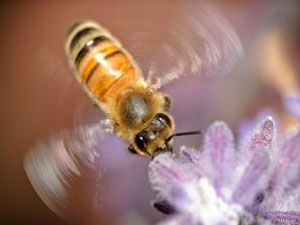《Nature》目录要览:2010-09-02出版
时间:2010-09-05 阅读: 我要评论:
《Nature》目录要览:2010-09-02出版

封面故事:细菌产生抗药性的机制
Bacterial charity work leads to population-wide resistance
对抗菌素有抗药性的细菌菌种的出现,是临床环境中一个越来越大的威胁,但人们对它们出现的过程却不是很了解。利用暴露于浓度不断增大的氟喹诺酮抗菌药“诺氟沙星”的一个大肠杆菌连续培养物所做实验表明,少数自然出现的抗药变体能保护其种群的绝大部分。这些具有高度抗药性的分离菌种产生信号作用分子“吲哚”,它能激发易感皮肤中的药物外排泵和其他保护机制。这种利他行为使较弱的成分能够存活,并有机会进行有益的突变。对细菌的细胞内通信的使用情况进行更多研究,对于用以控制抗药性细菌感染的临床干预手段的合理设计可能会被证明是有价值的。本期封面上的“红十字”图是用数字化手段从大肠杆菌种群的图像生成的。(Letter p. 82; News & Views)
(封面图片由David Ascano、 Henry Lee、Michael Molla 和James Collins提供。)
气候变化对中国水资源和农业的影响(China’s growth factor)
The impacts of climate change on water resources and agriculture in China
中国从2010年中期开始成为世界第二大经济体,并有望在几十年内成为第一大。该国具有巨大的气候和生态多样性。中国经济扩张对全球气候的可能影响已受到广泛研究,但人们对相反的过程——即中国自然系统和受控系统面对气候变化的脆弱性——却知之甚少。在一篇Review文章中,朴世龙(音译)等人对历史和未来气候变化对中国水资源和农业的影响进行了评估。他们发现,气候方面(尤其是气温方面)存在明显趋势,但总体影响却被作物响应和预期气候(尤其是降水)的自然变化及不确定性所遮掩。按照一个最佳情景,作物产量是恒定不变的,而按照最差情景,作物产量到2050年将有可能减少约20%。(Review p. 43)
第三个人类基因组单体型图完成(Third-generation HapMap)
Integrating common and rare genetic variation in diverse human populations
“国际人类基因组单体型图联合项目组”是为绘制一个人类基因组单体型图、以描述DNA序列变化的共同模式而成立的。现在,该机构已绘制出了其第三个单体型图。第一个单体型图(HapMap1)是2005年发表的(go.nature.com/gJisDm),含有超过100万个SNP(单核苷酸多态性)基因型,是由来自4个不同地域的人群的269个个体产生的。两年之后,第二个单体型图(HapMap2)(go.nature.com/WttNWX)为这269个个体的原始单体型图中增添了超过210万个SNP。第三个单体型图(HapMap3)的目标是,为最新一轮以疾病关联为重点的全基因组研究提供一个资源,所以其网撒得更宽。大约160万个共同SNP在来自11个全球人群的1184个个体中被确定了基因型,并且10个100-kb的区域也在这些个体的692个当中被测序。(Article p. 52)
刀刃上的神经细胞(Neuronal cells on knife-edge)
Neurotrophin receptors TrkA and TrkC cause neuronal death whereas TrkB does not
周围神经系统的神经元如果要存活,就需要营养因子,即维持细胞增殖和发育的自然生长因子。中枢神经系统中的大多数神经元可以不需要这种支持。那么为什么周围神经系统会如此需要呢?Nikoletopoulou等人利用通过基因工程方法获得的胚胎干细胞发现,神经营养因子受体TrkA 和 TrkC在发育中的神经元中起“依赖受体”(dependence receptor)的作用,在没有保护因子的情况下触发细胞死亡。TrkB(主要在中枢神经系统中表达的一种密切相关的受体)不会这样。这表明,伴随周围和中枢神经系统的分离而出现的Trk 基因家族的扩大,也许为细胞数量控制生成了一个机制。(Article p.59)
碳星IRC+10216光谱中发现十几条水线(Water features in old stars)
Warm water vapour in the sooty outflow from a luminous carbon star
2001年在衰老中的碳星IRC+10216周围发现了水蒸气,这一发现出乎意料,因为恒星演化模型预测,在富碳恒星中几乎没有水。人们对此提供了几个解释,但由于在一个富碳的、处于演化晚期的恒星的光谱中只检测到一个水线,所以难以对不同解释进行区分。现在,欧洲航天局Herschel卫星的观测工作在IRC+10216的远红外和亚毫米光谱中发现了十几条水线。这些水线包括能量相应于1,000 K左右温度的高激发线,它们只能通过在包络线里面的高温“煤烟”区存在水来解释。(Letter p. 64; News & Views)
生命模式的形成机制(The patterns of life)
Polar patterns of driven filaments
由很多自我推进的单一成分构成的复杂体系中的模式形成是一个普遍现象,见于鸟群、微生物群落和细胞骨架等多样化的体系中。由于没有一个足够简单的模型,因此为其机制提供一个统一解释的工作进展一直缓慢,但现在有了这么一个能扮演该角色的候选对象。这个新的实验体系涉及由运动蛋白推进的肌动蛋白细丝,它们被固定在一个表面上。在一个临界密度之上,这些细丝会自组织成相干运动的结构,并且不断进行密度调制,如成团、涡旋及形成互相连接的带状结构等。实验观测和模拟显示了这些有序结构的组合和分解的各种不同机制,并且也表明,弱的和局部的取向互动是模式形成所必需的。这个体系的可控性及向更复杂互动扩展的范围之广,应当使其非常适合对“宏观序”(macroscopic order)从微观互动的出现进行研究。(Letter p. 73; News &Views)
对“oncomiRs”上瘾的肿瘤(Tumour addicted to oncomiR)
OncomiR addiction in an in vivo model of microRNA-21-induced pre-B-cell lymphoma
微RNA (miRNA)是调控基因表达、在确定细胞身份中起重要作用的小RNA分子,它们被与人类癌症联系了起来,在人类癌症中,它们被称为“oncomiRs”。关于癌症形成的一个模型认为,增值的细胞变得对激发某个致癌基因中的突变“上瘾”,而且也曾有人提出,肿瘤也会变得依赖于“oncomiRs”。现在,用小鼠(研究人员通过基因工程方法使这些小鼠表达微RNA-21 (miR-21),该微RNA迄今为止在所分析过的大多数肿瘤类型中都过度表达)所做研究表明,miR-21诱导pre-B-cell淋巴瘤;在没有它的情况下,恶性细胞发生凋亡和退化,正如按它们对其存在“上瘾”(的假设)所预期的那样。因此,“oncomiR-21”和其他类似 miRNA的药理灭活应有治疗效果。(Letter p. 86)
细胞分裂中独立于纺锤体的卵裂沟形成机制(Where cells divide)
A spindle-independent cleavage furrow positioning pathway
在后生动物细胞分裂的“教科书”模型中(该模型建立在对较大海洋动物细胞和Candida elegans细胞所做的一个世纪的研究基础之上),有丝分裂纺锤体被假设引导卵裂沟的位置。现在,以检验这一模型是否足以解释一个较小细胞(果蝇成神经细胞)的非对称分裂过程中的卵裂沟位置为目的的实验表明,它是不能的。相反,一个新的路径在发挥作用,在这个路径中,Pins (partner of Inscuteable)极性复合物将形成卵裂沟的蛋白极化到基底皮层,在这里它们诱导收缩环形成。这种独立于纺锤体的细胞动力学卵裂沟机制可能与其他高度极化的细胞类型也相关。(Letter p. 91)
抗“阿尔茨海默氏症”药物的一个新目标(New Alzheimer’s target)
Gamma-secretase activating protein is a therapeutic target for Alzheimer’s disease
关于预防“阿尔茨海默氏症”药物的研发工作的一个主要焦点一直是,试图研发能减少神经毒性淀粉质-β肽在脑中积累的化合物。这种努力几乎没有成功的,部分是因为阻断γ-分泌酶的药物引起严重副作用,因为它们也阻断Notch(很多体内平衡功能所需的一种信号蛋白)的处理。现在,研究人员发现了一种“γ-分泌酶激发蛋白”(GSAP),它选择性地控制淀粉质-β肽生成,而不会影响Notch解理。这个发现为抗“阿尔茨海默氏症”药物提出了一个可能的新目标。抗癌药物imatinib (Gleevec)已知抑制淀粉质-β肽形成,而不会影响Notch解理,它被发现通过对GSAP的一个效应发挥作用。这表明,与imatinib 不同的是,能穿过“血脑屏障”的GSAP抑制因子也许有望能治疗“阿尔茨海默氏症”。(Letter p. 95; News & Views)
确定RNA结构的一种新方法(RNA in close-up)
Genome-wide measurement of RNA secondary structure in yeast
尽管RNA结构对其调控和功能很重要,但在实验中已经了解的RNA结构相对很少,而且也没有对RNA结构进行高通过量测量的实验方法。相反,计算方法是全基因组应用的标准方法。不过,新技术已使人们能够在更大规模上对RNA结构进行计算。Kertesz等人利用一种深度测序方法来确定酿酒酵母整个转录组的结构。他们获得的结果为二级结构在翻译中的作用提供了有趣的提示,并且为研究这类结构何以能根据环境条件而改变搭建了舞台。(Letter p. 103)
----------------------
NEWS AND VIEWS
----------------------
Biological physics: Filaments band together pp33-34
Theoretical models of the dynamics of self-driven systems predict the
collective motion of biological systems, such as insect swarms. An
experimental model has been developed to test the predictions.
Jean-Francois Joanny and Sriram Ramaswamy
doi:10.1038/467033a
http://www.nature.com/nature/journal/v467/n7311/full/467033a.html
Microbiology: Altruistic defence pp34-35
A charitable deed by a few cells in a bacterial culture can help the rest of
that population survive in the presence of antibiotics. This finding can aid
further research into a major problem in public health.
Hyun Youk and Alexander van Oudenaarden
doi:10.1038/467034a
http://www.nature.com/nature/journal/v467/n7311/full/467034a.html
Astrophysics: Unexpected warm water pp35-36
The detection of water vapour in a carbon star has challenged the
understanding of ageing stars. The discovery that such water can be warm
shows that our knowledge of these objects is still rudimentary.
Bengt Gustafsson
doi:10.1038/467035a
http://www.nature.com/nature/journal/v467/n7311/full/467035a.html
Alzheimer's disease: Selectively tuning [gamma]-secretase pp36-37
Presenilin proteins have a major role in normal cellular processes, but some
contribute to disease, for example through the formation of amyloid-[beta].
The way in which these different roles are regulated is now becoming
clearer.
Peter St George-Hyslop and Gerold Schmitt-Ulms
doi:10.1038/467036a
http://www.nature.com/nature/journal/v467/n7311/full/467036a.html
Laser science: Suckers for light pp37-39
An optical device has been designed that performs a function exactly
opposite to that of a laser. It perfectly absorbs incoming coherent
radiation and turns it into thermal or electrical energy.
Claire F. Gmachl
doi:10.1038/467037a
http://www.nature.com/nature/journal/v467/n7311/full/467037a.html
Regenerative medicine: Heart redevelopment pp39-40
Scientists report the conversion of one type of differentiated cell, the
fibroblast, into another [mdash] the cardiomyocyte. This approach may find
use in regenerative strategies for the repair of damaged hearts.
Richard P. Harvey
doi:10.1038/467039a
http://www.nature.com/nature/journal/v467/n7311/full/467039a.html
50 & 100 years ago p40
doi:10.1038/467040a
http://www.nature.com/nature/journal/v467/n7311/full/467040a.html
Obituary: Donald Charles Backer (1943-2010) p41
Astronomer who discovered a new class of pulsar.
S. R. Kulkarni
doi:10.1038/467041a
http://www.nature.com/nature/journal/v467/n7311/full/467041a.html
----------------------
REVIEW
----------------------
The impacts of climate change on water resources and agriculture in
China pp43-51
China has tremendous climatic and ecological diversity, so the impacts of
climate change on natural and managed systems might likewise be expected to
be diverse. Yet so far systematic studies have been rare. Here, the impacts
of historical and future climate change on water resources and agriculture
in China are assessed. Despite clear trends in climate, the overall impacts
are overshadowed by natural variability and uncertainties in crop responses
and projected climate, especially precipitation.
Shilong Piao et al.
doi:10.1038/nature09364
Abstract:
http://www.nature.com/nature/journal/v467/n7311/abs/nature09364.html
Article:
http://www.nature.com/nature/journal/v467/n7311/full/nature09364.html
----------------------
ARTICLES
----------------------
Integrating common and rare genetic variation in diverse human
populations pp52-58
Here, the analysis of 'HapMap 3' is reported [mdash] a public data set of
genomic variants in human populations. The resource integrates common and
rare single nucleotide polymorphisms (SNPs) and copy number polymorphisms
(CNPs) from 11 global populations, providing insights into
population-specific differences among variants. It also demonstrates the
feasibility of imputing newly discovered rare SNPs and CNPs.
doi:10.1038/nature09298
Abstract:
http://www.nature.com/nature/journal/v467/n7311/abs/nature09298.html
Article:
http://www.nature.com/nature/journal/v467/n7311/full/nature09298.html
Neurotrophin receptors TrkA and TrkC cause neuronal death whereas TrkB does
not pp59-63
Neurons of the peripheral nervous system need survival factors to prevent
their death during development. Most in the central nervous system do not.
Why are peripheral neurons so needy? Here it is shown that the neurotrophin
receptors TrkA and TrkC, expressed at high levels by many peripheral nervous
system neurons, behave as dependence receptors: they instruct neurons to die
if there is no ligand around. By contrast, TrkB, expressed mainly in the
central nervous system, does not signal death in the absence of ligand.
Vassiliki Nikoletopoulou et al.
doi:10.1038/nature09336
Abstract:
http://www.nature.com/nature/journal/v467/n7311/abs/nature09336.html
Article:
http://www.nature.com/nature/journal/v467/n7311/full/nature09336.html
----------------------
LETTERS
----------------------
Warm water vapour in the sooty outflow from a luminous carbon
star pp64-67
Water has been predicted to be almost absent in carbon-rich stars, so the
detection of water vapour around the ageing carbon star IRC + 10216
challenged our understanding of the chemistry in old stars. Several
explanations for the water have been postulated, but with only one water
line detected it is difficult to discriminate between them. Now, dozens of
water vapour lines have been detected in the far-infrared and sub-millimetre
spectrum of IRC + 10216.
L. Decin et al.
doi:10.1038/nature09344
Abstract:
http://www.nature.com/nature/journal/v467/n7311/abs/nature09344.html
Article:
http://www.nature.com/nature/journal/v467/n7311/full/nature09344.html
Single-atom-resolved fluorescence imaging of an atomic Mott
insulator pp68-72
For several years, researchers have aspired to record in situ images of a
quantum fluid in which each underlying quantum particle is detected. This
goal has now been achieved: here, fluorescence imaging is reported of
strongly interacting bosonic Mott insulators in an optical lattice, with
single-atom and single-site resolution. The approach opens up new avenues
for the manipulation, analysis and applications of strongly interacting
quantum gases on a lattice.
Jacob F. Sherson et al.
doi:10.1038/nature09378
Abstract:
http://www.nature.com/nature/journal/v467/n7311/abs/nature09378.html
Article:
http://www.nature.com/nature/journal/v467/n7311/full/nature09378.html
Polar patterns of driven filaments pp73-77
Collective motion is a ubiquitous self-organization phenomenon that can be
observed in systems ranging from flocks of animals to the cytoskeleton.
Similarities between these systems suggest that there are universal
underlying principles. This idea can be tested with 'active' or 'driven'
fluids, but so far such systems have offered limited parameter control.
Here, an active fluid is studied that contains only a few components [mdash]
actin filaments and molecular motors [mdash] allowing the control of all
relevant system parameters.
Volker Schaller et al.
doi:10.1038/nature09312
Abstract:
http://www.nature.com/nature/journal/v467/n7311/abs/nature09312.html
Article:
http://www.nature.com/nature/journal/v467/n7311/full/nature09312.html
Olivine water contents in the continental lithosphere and the longevity of
cratons pp78-81
Cratons, the ancient cores of continents, extend laterally for hundreds of
kilometres, and are underlain to depths of 180-250 km by mantle roots that
are chemically and physically distinct from surrounding mantle. But how can
these roots stay so isolated from mantle convection? Here it is shown that
olivine in peridotite xenoliths from the lithosphere-athenosphere boundary
region of the Kaapvaal craton mantle root is water-poor, providing
sufficient viscosity contrast with the underlying asthenosphere to explain
the root's stability.
Anne H. Peslier, Alan B. Woodland, David R. Bell and Marina Lazarov
doi:10.1038/nature09317
Abstract:
http://www.nature.com/nature/journal/v467/n7311/abs/nature09317.html
Article:
http://www.nature.com/nature/journal/v467/n7311/full/nature09317.html
Bacterial charity work leads to population-wide resistance pp82-85
Bacteria regularly evolve antibiotic resistance, but little is known about
this process at the population level. Here, a continuous culture of
Escherichia coli facing increasing antibiotic levels is followed. Most
isolates taken from this population are less antibiotic resistant than the
population as a whole. A few highly resistant mutants provide protection to
the less resistant constituents, in part by producing the signalling
molecule indole, which serves to turn on drug efflux pumps and
oxidative-stress protective mechanisms.
Henry H. Lee, Michael N. Molla, Charles R. Cantor and James J. Collins
doi:10.1038/nature09354
Abstract:
http://www.nature.com/nature/journal/v467/n7311/abs/nature09354.html
Article:
http://www.nature.com/nature/journal/v467/n7311/full/nature09354.html
OncomiR addiction in an in vivo model of microRNA-21-induced pre-B-cell
lymphoma pp86-90
One model for cancer development posits that the proliferating cells in a
tumour can become 'addicted' to activating mutations in an oncogene. With
the realization that certain microRNAs promote tumorigenesis, it has been
proposed that tumours may also become dependent on such 'oncomiRs'. Here,
evidence is provided that the gene encoding microRNA-21 is an oncogene, and
that in its absence, tumours undergo apoptosis and regress. Thus tumours can
indeed become addicted to oncomiRs.
Pedro P. Medina, Mona Nolde and Frank J. Slack
doi:10.1038/nature09284
Abstract:
http://www.nature.com/nature/journal/v467/n7311/abs/nature09284.html
Article:
http://www.nature.com/nature/journal/v467/n7311/full/nature09284.html
A spindle-independent cleavage furrow positioning pathway pp91-94
The mitotic spindle plays a key part in determining the site of the cleavage
furrow in dividing metazoan cells. But are other mechanisms also involved?
Here evidence is provided for a spindle-independent pathway for furrow
positioning that occurs during asymmetric divisions of Drosophila neuroblast
cells. The pathway involves the Pins protein complex, which polarizes
furrow-forming proteins to the basal cortex of the cell. This mechanism
might also occur in other highly polarized cell types.
Clemens Cabernard, Kenneth E. Prehoda and Chris Q. Doe
doi:10.1038/nature09334
Abstract:
http://www.nature.com/nature/journal/v467/n7311/abs/nature09334.html
Article:
http://www.nature.com/nature/journal/v467/n7311/full/nature09334.html
Gamma-secretase activating protein is a therapeutic target for Alzheimer/'s
disease pp95-98
A major hallmark of Alzheimer's disease is the accumulation in the brain of
amyloid-[beta] peptide. This is generated by [gamma]-secretase, which is
thus of interest as a target for drugs to prevent amyloid-[beta]
accumulation. A problem is that [gamma]-secretase has other substrates,
including Notch, important in development. Here, a [gamma]-secretase
activating protein is identified that increases amyloid-[beta] production
without affecting Notch. Thus this protein can serve as an
amyloid-[beta]-lowering drug target without affecting other functions of
[gamma]-secretase.
Gen He et al.
doi:10.1038/nature09325
Abstract:
http://www.nature.com/nature/journal/v467/n7311/abs/nature09325.html
Article:
http://www.nature.com/nature/journal/v467/n7311/full/nature09325.html
Neurological disease mutations compromise a C-terminal ion pathway in the
Na+/K+-ATPase pp99-102
The Na+/K+-ATPase pumps three sodium ions out of and two potassium ions into
the cell while splitting a single molecule of ATP. Here it is found that the
carboxy terminus of the ATPase's [alpha]-subunit is also a key regulator of
a previously unrecognized ion pathway. The data indicate that, in the
ATPase's potassium-bound state, a cytoplasmic proton can enter and stabilize
site III when empty. When potassium is released, the proton returns to the
cytoplasm, thus permitting an overall asymmetric stoichiometry of the
transported ions.
Hanne Poulsen et al.
doi:10.1038/nature09309
Abstract:
http://www.nature.com/nature/journal/v467/n7311/abs/nature09309.html
Article:
http://www.nature.com/nature/journal/v467/n7311/full/nature09309.html
Genome-wide measurement of RNA secondary structure in yeast pp103-107
Experimental determination of the secondary structure of RNA molecules has
usually been carried out on a case-by-case basis. Now, however, a
deep-sequencing approach has been used to profile the secondary structure of
3,000 distinct messenger RNA transcripts from Saccharomyces cerevisiae. The
results provide interesting hints about the role of secondary structure in
protein translation, and set the stage for the examination of how such
structures can change in response to environmental conditions.
Michael Kertesz et al.
doi:10.1038/nature09322
Abstract:
http://www.nature.com/nature/journal/v467/n7311/abs/nature09322.html
Article:
http://www.nature.com/nature/journal/v467/n7311/full/nature09322.html
Mechanism of the ATP-dependent DNA end-resection machinery from
Saccharomyces cerevisiae pp108-111
When double-strand breaks occur in DNA, the broken ends must undergo
processing to prepare them for repair. Here, and in an accompanying study,
this processing reaction has now been replicated in vitro using yeast
proteins. Processing minimally requires the activities of a helicase, a
nuclease and a single-strand-binding protein, although the reaction is
enhanced by the addition of three factors that help to target the core
complex and stimulate the unwinding activity.
Hengyao Niu et al.
doi:10.1038/nature09318
Abstract:
http://www.nature.com/nature/journal/v467/n7311/abs/nature09318.html
Article:
http://www.nature.com/nature/journal/v467/n7311/full/nature09318.html
DNA end resection by Dna2-Sgs1-RPA and its stimulation by Top3-Rmi1 and
Mre11-Rad50-Xrs2 pp112-116
When double-strand breaks occur in DNA, the broken ends must undergo
processing to prepare them for repair. Here, and in an accompanying study,
this processing reaction has now been replicated in vitro using yeast
proteins. Processing minimally requires the activities of a helicase, a
nuclease and a single-strand-binding protein, although the reaction is
enhanced by the addition of three factors that help to target the core
complex and stimulate the unwinding activity.
Petr Cejka et al.
doi:10.1038/nature09355
Abstract:
http://www.nature.com/nature/journal/v467/n7311/abs/nature09355.html
Article:
http://www.nature.com/nature/journal/v467/n7311/full/nature09355.html
| 《Nature》目录要览 — 2011-04-28出版 |
| 《Nature》目录要览:2011-01-20出版 |
| 《Nature》目录要览:2010-12-23出版 |
| 《Nature》目录要览:2010-12-16出版 |
| 《Nature》目录要览:2010-12-09出版 |
| 《Nature》目录要览:2010-12-02出版 |
特别声明:本文转载仅仅是出于传播信息的需要,版权归原作者所有,并不意味着代表本网站观点或证实其内容的真实性; 如其他媒体、网站或个人从本网站转载使用,须保留本网站注明的“来源”,并自负版权等法律责任; 作者如果不希望被转载或者联系转载稿费等事宜,请与我们接洽:service#environmentor.cn(请将#改为@)。
来源:Nature 作者:Environmentor (环境人 Environmentor.Cn)





